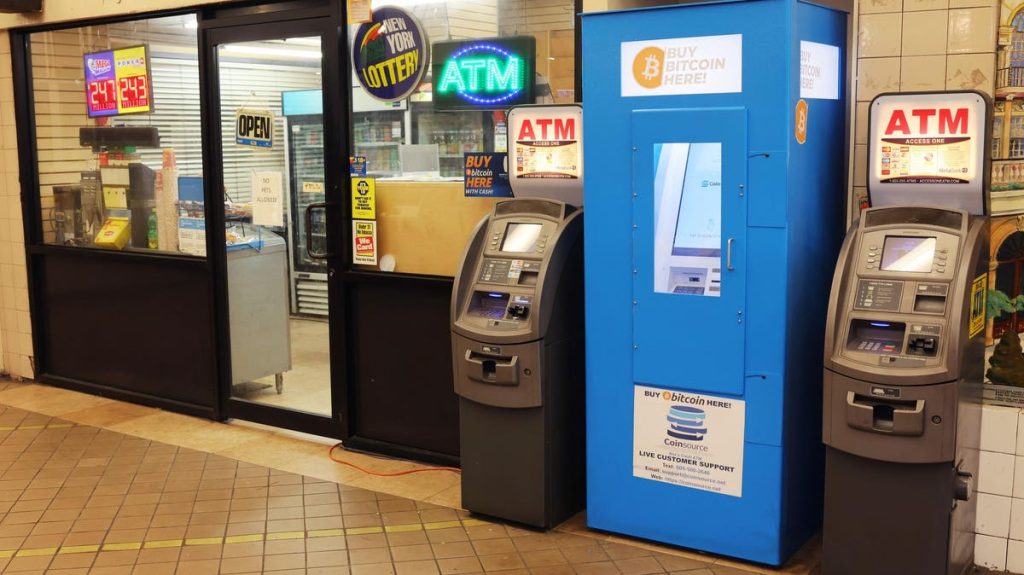America had 470,000 ATMs (the machines where you put in a card to get out some cash) when their numbers peaked in 2019. By the end of last year, according to Euromonitor International, there were 451,000. Meanwhile, the number of reverse ATMs (the machines where you put in some cash to get out a card) is steadily growing.
Alternative Networks
I remember that many years ago when I first went to a restaurant in Moscow there were two things that struck me as unusual. Firstly, when I was shown an extensive list of vodkas to choose from and declined and asked for a soft drink, they brought me a list of beers. Secondly, the restaurant had what appeared to be two ATMs in it. One of them was indeed an ATM and I saw people withdraw cash from it. But the second was not an ATM but a reverse ATM, which I had never seen before. People would draw money from the ATM and then feed cash into the reverse ATM to pay their mobile phone bills, utility bills and to get virtual card numbers to use for online shopping. I thought that after the invention of smartphones, these would disappear. But I was wrong, they are back. In America.
Why? It’s partly an unintended consequence of the ban on cash-free stores in a number of American cities and partly because the American financial system has created a vast reservoir of underserved people.
If you recall, a number of cities have been passing “Party like it’s 1949” laws to force merchants to accept cash. I call them “1949 ordnances” because, of course, it was in 1949 that Diner’s Club kick-started the modern retail payments industry in New York. Back in 2020, however, New York passed a 1949 ordnance. Instead of leaving the choice of payment method to private contract between a store and its customers, the city began fining businesses that were cash free – including upscale ice cream parlor Van Leeuwen and popular Bushwick pizza joint Roberta’s – meaning that they had no choice but to find a way to incur the expense and inconvenience of cash.
These bans are not universally popular, as you can imagine. Detroit has just passed one of these 1949 ordinances despite the pleas of Kai Bowman, who spoke on behalf of the Metro Detroit Black Business Alliance, calling it “poor policy that does nothing to help elevate our city, but instead offers criminal penalties … to small business owners who have done nothing but try to adjust to the tough times.”
You can understand the sentiment. These laws impose costs on merchants. I suppose it is possible some merchants might have gone over to electronic payments only on idealogical grounds, but I have to say that I haven’t met one of them. When a store goes cash free, it’s because it saves them money. Hence when a city passes a 1949 ordinance, it is essentially imposing a stealth tax.
In order to remove cash handling from the point of service and to speed up lines, as well as comply with the ordnances, many businesses are putting in reverse ATMs as well. Reverse ATMs have been installed at most Major League Baseball and National Football League ballparks, plus cashless attractions like Hersheypark, Six Flags
SIX
and many waterparks. The new phrase here is “cash digitization”, which I rather like, as it reinforces my obsessive distinction between digital money and digitised money.
(It would never occur to me to take cash to an attraction or to a waterpark or to sporting event. I can assure you that on every visit to the home of Woking FC for as long as I can remember, I have never paid for my burger and chips using anything other than my iPhone or a contactless wearable, although I assume that some people still pay with cash.)
Interestingly, one of the providers of reverse ATMs speculated that in the future there might be no need to dispense a physical card from the machines, instead offering customers “a virtual card on your smartphone”, much as they did in Russia all those years ago!
Who Pays?
The other driver, though, is the underserved. If there are people who cannot or will not get bank account, who cannot or will not pay for a prepaid card, who do not want their purchases recorded in any way… who should pay to support them? It doesn’t seem reasonable to me to impose a stealth tax on merchants and nor does it seem reasonable to me to make marginalised groups pay reverse ATM and prepaid fees. What, then, should we do about the unbanked?
My view, as I have written here before, is that unbanked is not the problem and banks are not the solution. What we need here are simple payment accounts, accessed through digital wallets, that enable people to pay and get paid and that’s it. Maybe that’s where CBDC will make a difference.
Read the full article here



